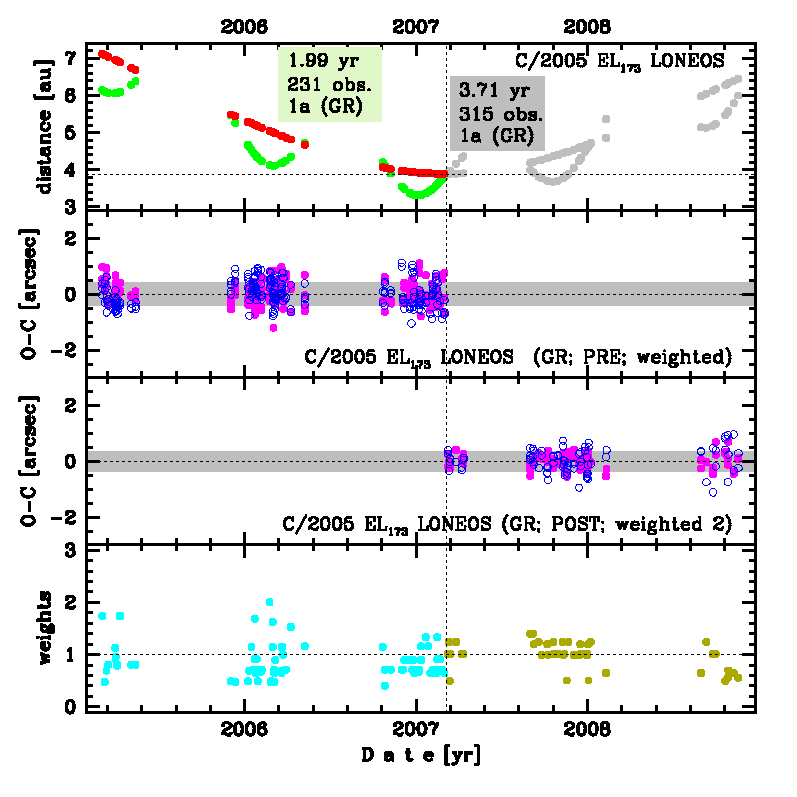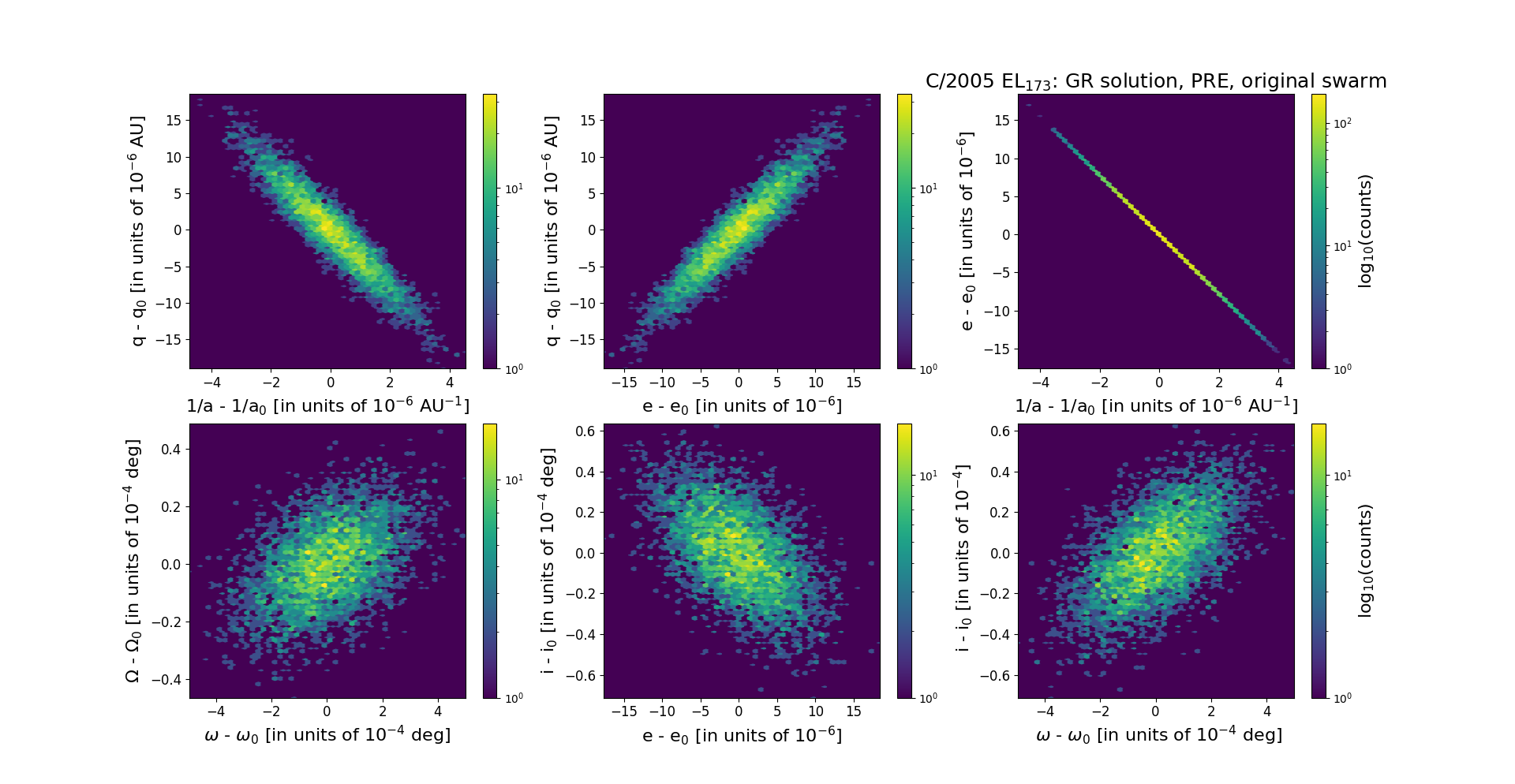C/2005 EL173 LONEOS
more info
C/2005 EL173 was discovered on 8 March 2005 by the LONEOS as an apparently asteroidal object in a retrograde orbit and semimajor axis of 36 au [MPEC 2005-F48, 2005 March 29]. Therefore it was initially classified as cubewano or scattered disc object in MPC. Its cometary apperance was reported by A. Fitzsimmons on 10 May 2005. C/2005 EL173 was observed until mid-November 2008.
This comet made its closest approach to the Earth on 4 January 2007 (3.310 au), two months before perihelion passage.
Solutions given here are based on data spanning over 3.7 yr in a range of heliocentric distances: 7.12 au – 3.886 au (perihelion) – 6.45 au.
NG orbit using full data-arc is determinable.
This Oort spike comet suffers rather slight planetary perturbations during its passage through the planetary system; however, these perturbations leas to escape this comet from the planetary zone on a hyperbolic orbit.
See also Królikowska and Dones 2023, Królikowska and Dybczyński 2017,and Królikowska 2014.
This comet made its closest approach to the Earth on 4 January 2007 (3.310 au), two months before perihelion passage.
Solutions given here are based on data spanning over 3.7 yr in a range of heliocentric distances: 7.12 au – 3.886 au (perihelion) – 6.45 au.
NG orbit using full data-arc is determinable.
This Oort spike comet suffers rather slight planetary perturbations during its passage through the planetary system; however, these perturbations leas to escape this comet from the planetary zone on a hyperbolic orbit.
See also Królikowska and Dones 2023, Królikowska and Dybczyński 2017,and Królikowska 2014.
| solution description | ||
|---|---|---|
| number of observations | 231 | |
| data interval | 2005 03 03 – 2007 03 01 | |
| data arc selection | data generally limited to pre-perihelion (PRE) | |
| range of heliocentric distances | 7.12 au – 3.89au | |
| detectability of NG effects in the comet's motion | comet with determinable NG~orbit | |
| type of model of motion | GR - gravitational orbit | |
| data weighting | YES | |
| number of residuals | 457 | |
| RMS [arcseconds] | 0.43 | |
| orbit quality class | 1a | |
| orbital elements (barycentric ecliptic J2000) | ||
|---|---|---|
| Epoch | 1703 05 14 | |
| perihelion date | 2007 03 05.84564205 | ± 0.00078375 |
| perihelion distance [au] | 3.88760073 | ± 0.00000548 |
| eccentricity | 0.99981017 | ± 0.00000504 |
| argument of perihelion [°] | 261.491882 | ± 0.000144 |
| ascending node [°] | 344.763222 | ± 0.000013 |
| inclination [°] | 130.759841 | ± 0.000019 |
| reciprocal semi-major axis [10-6 au-1] | 48.83 | ± 1.30 |
| file containing 5001 VCs swarm |
|---|
| 2005elpa.bmi |

Upper panel: Time distribution of positional observations with corresponding heliocentric (red curve) and geocentric (green curve) distance at which they were taken. The horizontal dotted line shows the perihelion distance for a given comet whereas vertical dotted line — the moment of perihelion passage.
Middle panel(s): O-C diagram for a given solution (sometimes in comparison to another solution available in CODE), where residuals in right ascension are shown using magenta dots and in declination by blue open circles.
Lowest panel: Relative weights for a given data set(s).
Middle panel(s): O-C diagram for a given solution (sometimes in comparison to another solution available in CODE), where residuals in right ascension are shown using magenta dots and in declination by blue open circles.
Lowest panel: Relative weights for a given data set(s).
